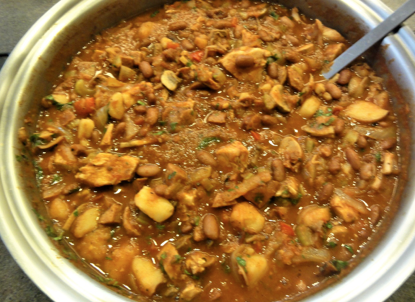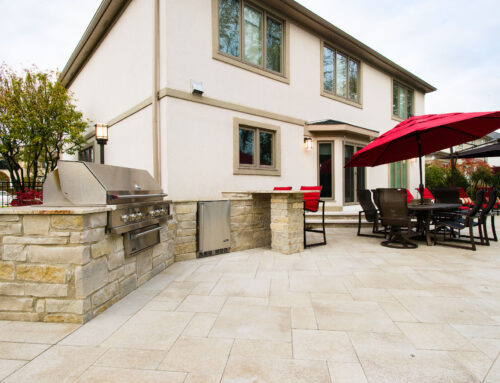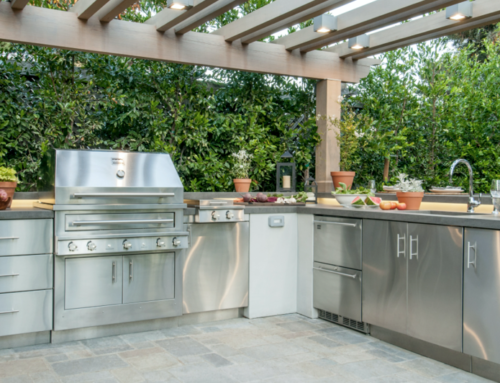Start With Chili If You Want To Eat Healthy!
Written by Chef Michael Niksic
There are some misconceptions about Chili. Too many “chefs” have the thought in their melons that chili should melt taste buds, cook for hours in an iron or aluminum cauldron or be consumed with a spoon. So so let me separate reality from those thoughts.
Adding heat in the form of spices and peppers is akin to a testosterone bath. Hotter isn’t better. It’s hotter. No more no less. If that’s your thing don’t ever cook for me. I like my taste buds intact not turned into scar tissue. If you think cooking chili in one pot for hours is cool do cook for someone else. If you are eating chili with a spoon, it’s actually soup. Chili demands being wolfed down with a fork! No arguments about beans please. I use beans and anyone else that does is free to do so.
Great chili is the result of great cooking methods and an understanding of those methods. Cooking beans separately allows for separate seasoning of them. It also allows for separation of cooking times for individual items. By prepping components separately like beans it allows for layering flavors and also intermingling the components for more distinct flavor combinations. This approach always beats having a case of lava throat because uncle Bob thinks it’s hilarious watching steam exit openings not meant to do so among the family at the annual barbeque.
Here are some preparation mistakes to avoid. If you are using ground beef, don’t cook it in the pot. Spread the ground beef across a baking sheet with raised sides on baking paper. Break it up into smaller pieces and season it well with salt, pepper, granulated onion and granulated garlic, maybe even cumin or chili powder as you see fit. Pre heat your oven to 450. Slide the beef in and keep it there until it browns and caramelizes. This will render the excess fat out of it and the extra water not needed (which can be dumped when it comes out of the oven). Let it cool and break it up with your hands and add it to the chili once you have sautéed your vegetables and added your tomato products. This will give your chili a rich beef flavor that cannot be duplicated by “cooking the beef in a pot which turns it gray, not brown). The juices from the beef will also boil your vegetables, another outcome that is not desirable.
Don’t add more vegetables to the pot than can be comfortably cooked by sautéing. They will cook slower if overloaded, and simmer in their own juices rather than sear and brown with produces the nature sweet flavor desired. Use crushed tomatoes and tomato puree for the best tomato flavors and consistency. The juices and beans when added will add yet another layer of flavor to your chili. Don’t cook in aluminum anything, ever. It’s a soft metal and literally melts into your chili when it comes in contact with acidic foods like tomatoes. Sugar does not cut down acidity. Sugar is an acid. So that is impossible. It masks the tomato flavor by tricking your taste buds through sweetening the chili. Chefs that use sugar for this purpose are poorly trained. It’s a red flag for real chef to see that.
Chili when made smartly is rich in protein, high in fiber, vitamins & minerals. It’s also very low in cholesterol and calories. Always keep your food stored at less than 40 degrees in your refrigerator in air tight containers. Bacteria needs air and moisture to grow. Deny both access to your food and it will last longer and taste fresher. Keep one quart of soup or chili in a 1qt. container. If you have one cup left, keep it in a one cup container.
Chili comes in many forms and combinations. No matter how interesting the combinations are the outcome is always determined by the actual grasp of cooking methods by the person preparing it. Recipes don’t exist without methods. Knowing your methods is essential to producing the best results possible when making a meal.

Red Beans.
Soak 1# of red beans overnight in water in refrigerator. Drain the next day. Add beans to soup pot-heavier is better to avoid scorching by accident.
Add:
40 oz water-hot
12 oz tomato juice
3 tsp. chili powder
1 ½ tsp. granulated-or flaked onion
1 tsp. paprika
1 tsp. black pepper
½ tsp leaf thyme
1 tsp salt
3 tsp Cajun spices or blackening seasoning
Simmer everything until beans become soft but not falling apart, approximately 60 minutes depending on pan size and heat source. Take your time, stir regularly to evenly cook and prevent scorching. If beans are under cooked, and the mix is looking dry add a bit of water as needed and continue simmering until they are cooked to your liking. Remember they will continue to cook after they are removed from the fire. Cool as quickly as possible. Beans are mostly protein and can spoil easily if not taken care of. They will cool quicker if in a shallow container, spread out a bit. Shelf life is about 1 week in the cooler, in a clean, well sealed container at 38 degrees or less.
TURKEY & ANDOUILLE RED BEAN CHILI
8oz Andouille Sausage – diced 10oz Turkey meat – diced
1 large bell pepper – diced 1 ½ cups diced onion
3 stalks celery – diced 4 oz mushrooms – sliced
1 ½ T fresh chopped garlic ¼ large bunch cilantro chopped
12oz tomato juice 1 recipe red beans
Sauté the Sausage until browned in its own fats. Remove from pot. Keep oils in pan. Sauté first the celery; next add the bell pepper, then the onion, then the mushrooms. Add garlic last. When vegetables are translucent, add tomato juice, cilantro and sausage, turkey and the finished red bean recipe.
Bring to a thorough simmer for about 15 minutes. Refrigerates well, freezes well. Let chili cool before refrigeration. Best & faster in a cold water bath and occasional stirring until room temperature. Keep in airtight container that is washed and sanitary prior to use. Refrigerated temp best at 38 degrees or lower, freezing at 10 degrees or lower. Bring to a boil before serving in a skillet for best results. Any signs of gas build-up means it has been contaminated and do not serve. Bulging lid and air bubbles in the chili are “tells”.
Serve in tortillas, over mashed potatoes, on rice, over noodles. Serve with cheese, sour cream, crackers, or bread. Great ideas also include brunch, lunch, dinner, barbecues, tail gating, camping, late night snacks, halftime or picnics.


















